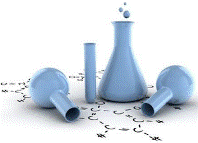Chemical and Biomolecular Engineering, Department of
Date of this Version
12-26-2021
Document Type
Article
Citation
Metabolic Engineering Communications 14 (2022) e00191. https://doi.org/10.1016/j.mec.2021.e00191
Abstract
Rhodopseudomonas palustris CGA009 is a metabolically robust microbe that can utilize lignin breakdown products to produce polyhydroxyalkanoates (PHAs), biopolymers with the potential to replace conventional plastics. Our recent efforts suggest PHA granule formation is a limiting factor for maximum production of the bioplastic poly (3-hydroxybutyrate-co-3-hydroxyvalerate) (PHBV) by R. palustris. The Phap1 phasin (phaP1) from the PHBproducing model bacterium Cupriavidus necator H16 was expressed in R. palustris with the aim of overproducing PHBV from the lignin breakdown product p-coumarate by fostering smaller and more abundant granules. Expression of phaP1 yielded PHBV production from R. palustris aerobically (0.7 g/L), which does not occur in the wild-type strain, and led to a significantly higher PHBV titer than wild-type anaerobic production (0.41 g/L). The 3HV fractions were also significantly increased under both anaerobic and aerobic conditions, which boosts thermomechanical properties and potential for application. Thus, heterologous phasin expression in R. palustris provides flexibility for industrial processing and could foster compositional changes in copolymers with better thermomechanical properties compared to PHB alone.



Comments
© 2021 The Authors. Published by Elsevier B.V. on behalf of International Metabolic Engineering Society. This is an open access article